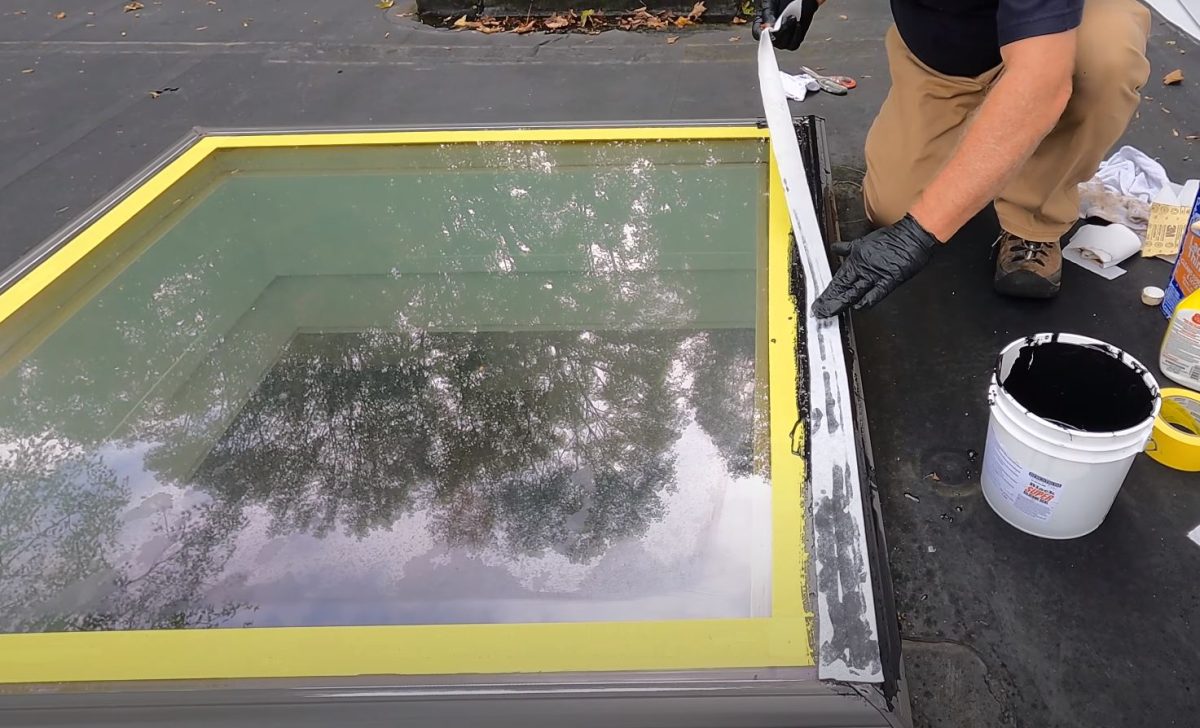The Importance of Sealing Skylights
What is Skylight Sealing?
Skylight sealing is the process of ensuring that the junctions between a skylight unit and the roof it’s installed in are watertight. The sealing prevents moisture, wind, and external elements from penetrating the interior of the building. Sealing is not just about applying sealants; it’s about the proper installation and maintenance of the skylight unit as a whole.
Why Sealing is Essential for Skylights
- Protection Against Weather Elements: Auckland’s weather is known for its unpredictable rain showers, especially around suburbs like Point Hobsonville and Pakuranga. Properly sealed skylights ensure that rainwater doesn’t find its way into the house.
- Energy Efficiency: Sealed skylights act as insulators, reducing the loss of heat during winters and keeping the house cool in summers. This, in turn, results in decreased energy bills.
- Preventing Mould and Mildew: Moisture seepage can lead to the growth of mould and mildew, which can adversely affect the health of the inhabitants.
- Increased Durability: A sealed skylight is less susceptible to wear and tear from weather fluctuations, giving it a longer lifespan.
Health and Safety Aspects
- Mould and Mildew Growth: As mentioned earlier, unsealed or poorly sealed skylights can lead to moisture build-up which can promote the growth of mould and mildew. This poses health risks, particularly respiratory problems.
- Slip Hazards: Leaks from skylights can result in wet floors, creating a potential slip hazard for inhabitants.
Different Skylight Options in Auckland
Given the varied requirements of Aucklander homeowners, there’s a range of skylight options available:
- Fixed Skylights: These are non-operable and simply allow light in. They’re typically sealed to provide optimum insulation.
- Ventilated Skylights: These can be opened to allow ventilation. Proper sealing is crucial to ensure they don’t leak when closed.
- Tubular Skylights: These are compact, suitable for smaller spaces and require specialized sealing techniques.
Comparison Table for Skylight Alternatives
| Skylight Type | Use Case | Advantages | Disadvantages |
| Fixed Skylights | General illumination | Optimum insulation; Low maintenance | Non-operable; No ventilation |
| Ventilated Skylights | Ventilation & illumination | Allows fresh air; Suitable for kitchens/bathrooms | Requires meticulous sealing; Higher maintenance |
| Tubular Skylights | Small spaces | Compact; Innovative design | Limited light compared to larger skylights |
Sealing Exceptions and Considerations
While sealing is paramount, there are situations where different considerations apply:
- Older Homes in Auckland: Homes in older suburbs may have unique architectural features. In such cases, custom sealing solutions might be required.
- Material of the Skylight: The material of the skylight, whether it’s acrylic, polycarbonate, or glass, can dictate the type of sealant and sealing method used.
Making the Right Choice for Your Property
If you’re located in areas such as Point Hobsonville or Pakuranga, understanding the importance of skylight sealing is essential. It’s not just about aesthetics but also about ensuring the longevity of your skylight and the safety of your home.
If you’re considering adding a skylight to your property or are concerned about the current state of your skylight, engaging with professionals like My Roofers Auckland ensures you’re making an informed decision. They can provide insights tailored to the unique requirements of your home, ensuring you get the most out of your skylight investment.
Understanding Skylight Sealing: Frequently Asked Questions
What is the primary purpose of sealing skylights?
The main objective of sealing skylights is to ensure a watertight barrier between the skylight unit and the roof. This prevents moisture, wind, and external elements from entering the interior of the building, protecting against potential water damage and improving energy efficiency.
Why is sealing crucial for Auckland properties in particular?
Given Auckland’s unpredictable weather patterns, especially in areas like Point Hobsonville and Pakuranga, sealing is essential to prevent rainwater intrusion and moisture build-up. Sealed skylights also enhance energy efficiency, which is vital for Auckland’s varied climate.
Are there different sealing methods for different skylight types?
Yes, the sealing method often depends on the type of skylight. For instance, ventilated skylights require meticulous sealing to ensure they don’t leak when closed, while tubular skylights may require specialized sealing techniques due to their compact nature.
How often should I check the sealing on my skylight?
It’s recommended to inspect the sealing of your skylight at least once a year. Regular checks can help detect early signs of wear or potential leak points, allowing for timely repairs and maintenance.
What are the risks of a poorly sealed skylight?
A skylight that isn’t adequately sealed can lead to water leaks, promoting mould and mildew growth. This not only poses health risks but can also lead to structural damage, reduced energy efficiency, and increased utility bills.
Can I reseal my skylight myself?
While there are DIY sealing kits available, it’s always best to consult with or hire professionals, especially in complex installations or when unsure about the sealing method. Professionals like My Roofers Auckland have the expertise to ensure a skylight is sealed correctly, offering peace of mind.
If I notice a leak, does it mean my skylight sealing has failed?
While a leak is a common sign of sealing failure, it’s not the only possibility. Leaks can also result from issues like condensation, cracks in the skylight material, or adjacent roofing problems. However, if you notice a leak, it’s crucial to get it assessed by experts to determine the cause and rectify it.

